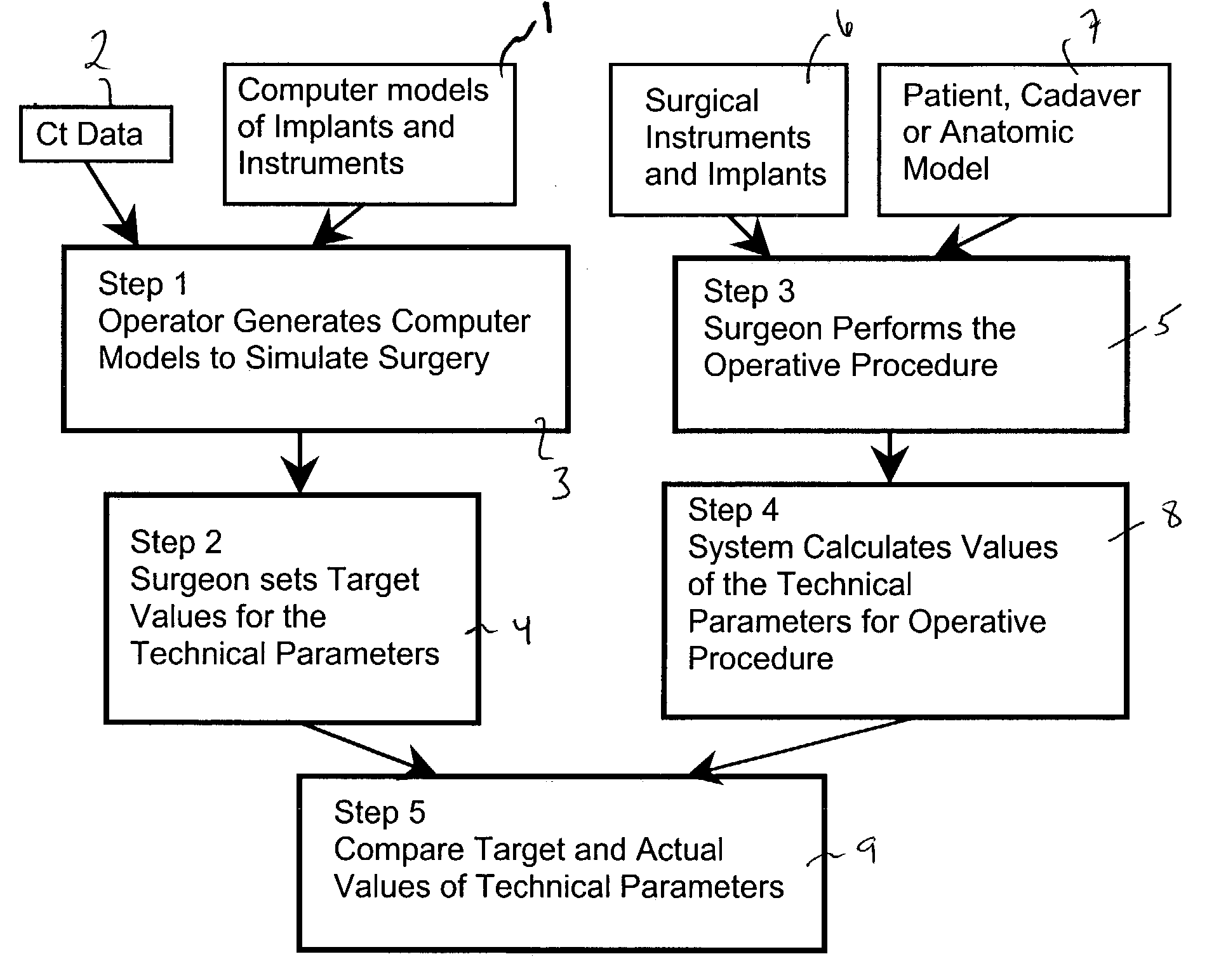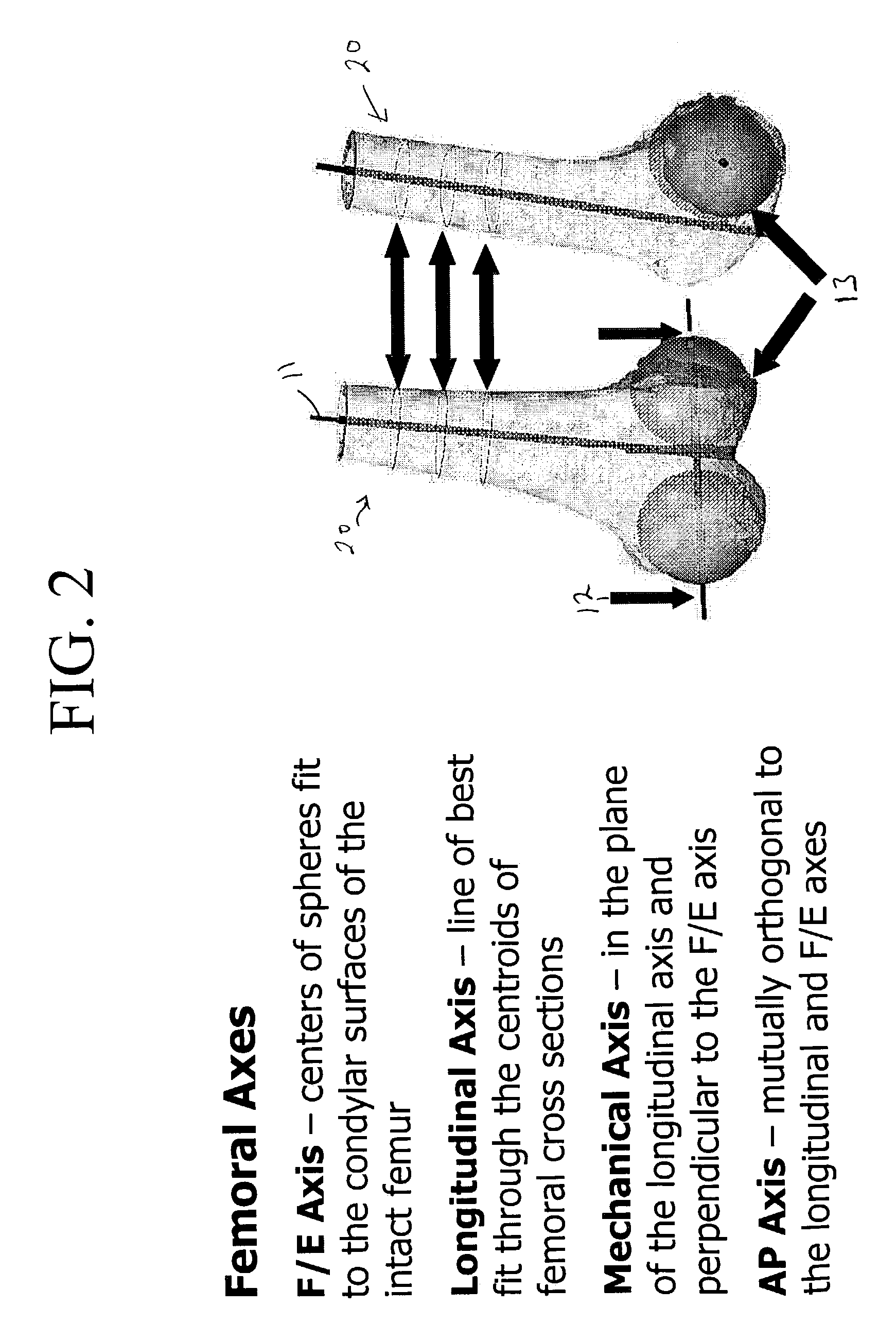Computer-based training methods for surgical procedures
a surgical procedure and computer-based technology, applied in the field of computer-based training methods for surgical procedures, can solve the problems of reducing accuracy, adding significant expense to the use of the system, and reducing accuracy, so as to achieve the effect of without expense or impediments
- Summary
- Abstract
- Description
- Claims
- Application Information
AI Technical Summary
Benefits of technology
Problems solved by technology
Method used
Image
Examples
example 1
[0065]The following experiment was conducted to assess a number of surgeons with varying skill levels, performing the same procedure with the same instrumentation. Here, fifteen lower extremities were harvested from cadaveric donors (ten males, five females; average age: 76 years). Anteroposterior and lateral radiographs were prepared of each specimen to exclude cases with evidence of previous trauma, or significant skeletal pathology. Scans were obtained of each specimen using a helical scanner (GE Medical Systems) and contiguous slices of 2.5 mm through the shafts of the tibia and femur with slices at a thickness of 1.25 mm through the joint. Three-dimensional computer models (solid models) of the tibia and femur, with a dimensional accuracy of approximately 0.2 mm, were prepared by reconstruction of the data derived from the CT slices. This procedure was performed using commercially available computer programs (MATERIALIZE, vended in Belgium).
[0066]Using CAD software routines (Un...
example 2
[0073]On a case by case basis, measuring the alignment of many of the instruments during the surgical procedure allows the identification and tracking of errors throughout the surgery. The following describes the results of one particular surgery using PCL retaining components and instrumentation. The philosophy of this surgical procedure was a “balanced resection” technique (FIG. 10). Unlike other techniques, balanced resection requires equality in the distal and posterior cuts independently on the lateral and medial side. The difference in resection medial to lateral was insignificant. The amount of resection medially and laterally was determined by a fixed valgus cut of the femur distally (dependent on the design of the femoral cutting guide and femoral component). Once this level was determined in full extension, the amount of resection of the posterior condyles in flexion is matched. FIGS. 11-12 quantitatively show the implementation of this plan, while FIG. 10 shows the how ac...
example 3
[0075]The present method was also applied to total hip replacement. FIG. 18 shows the rotational orientation of the acetabular reamer. This particular surgery fell outside acceptable range in terms of rotational offset resulting in significant retroversion of the prepared acetabular surface. FIG. 19 shows that when seated, the cup did reach the intended position. On the femoral side, FIG. 21 shows the positional malalignment of the entry point for the start awl. Finally, FIG. 20 shows the combined effect of the positional and rotational placement of the implanted components in terms of the predicted range of motion of the reconstructed joint. The graph in FIG. 21 shows the combinations of hip flexion and hip adduction that may have a higher propensity for impingement.
PUM
 Login to View More
Login to View More Abstract
Description
Claims
Application Information
 Login to View More
Login to View More - R&D
- Intellectual Property
- Life Sciences
- Materials
- Tech Scout
- Unparalleled Data Quality
- Higher Quality Content
- 60% Fewer Hallucinations
Browse by: Latest US Patents, China's latest patents, Technical Efficacy Thesaurus, Application Domain, Technology Topic, Popular Technical Reports.
© 2025 PatSnap. All rights reserved.Legal|Privacy policy|Modern Slavery Act Transparency Statement|Sitemap|About US| Contact US: help@patsnap.com



